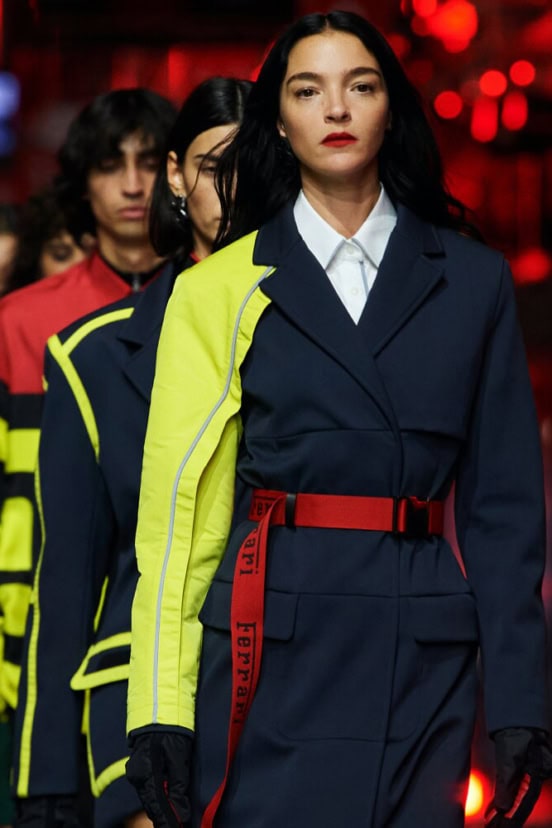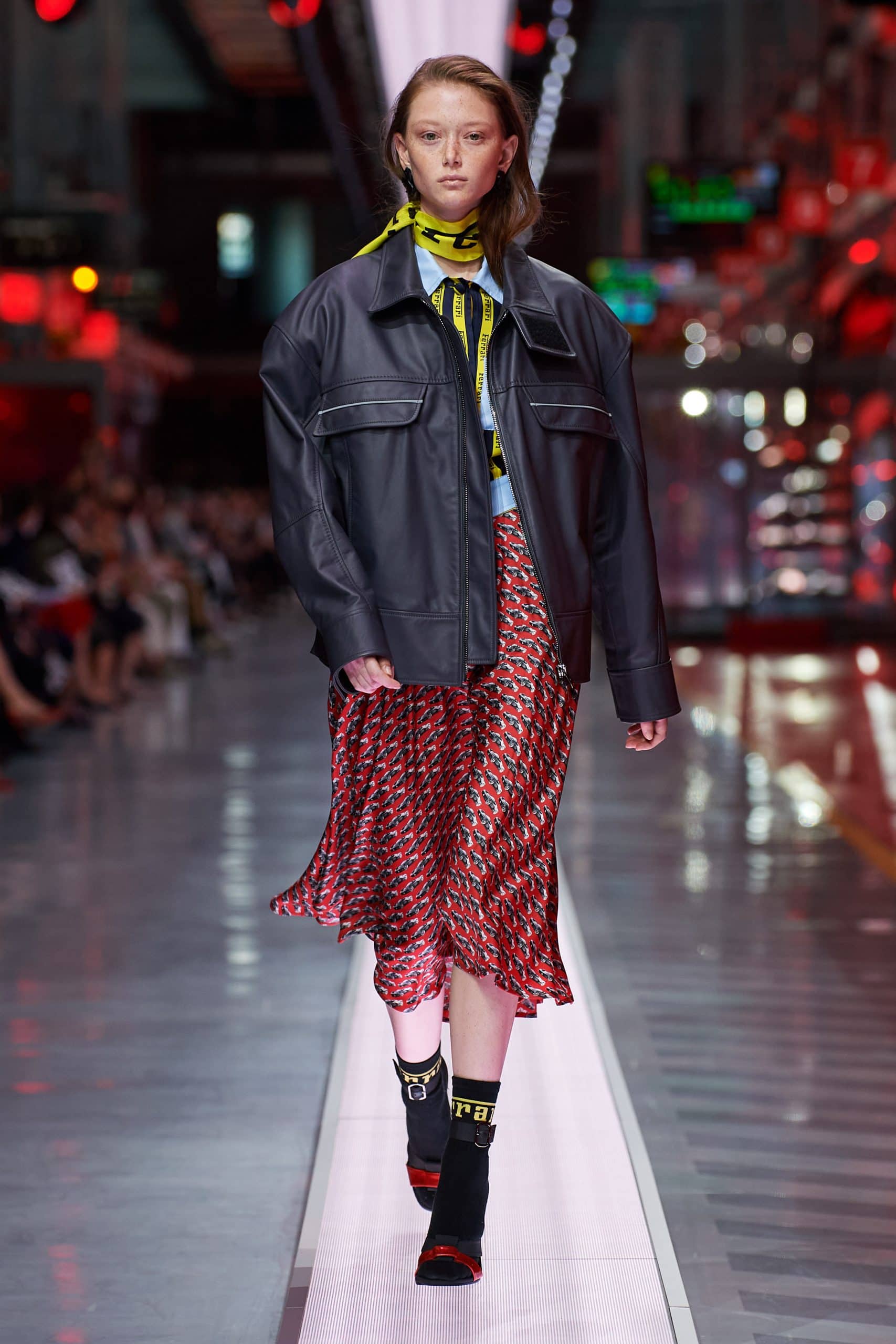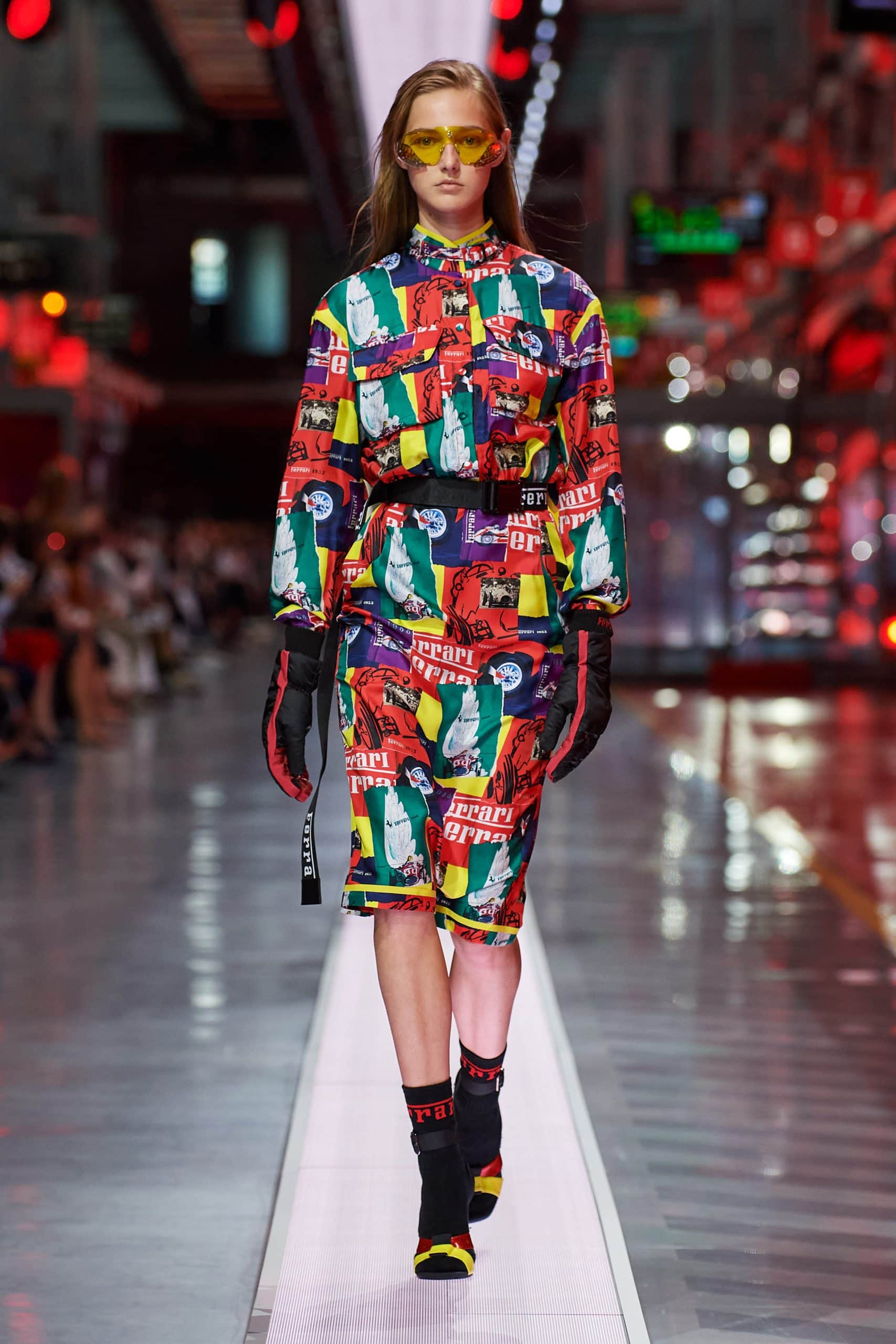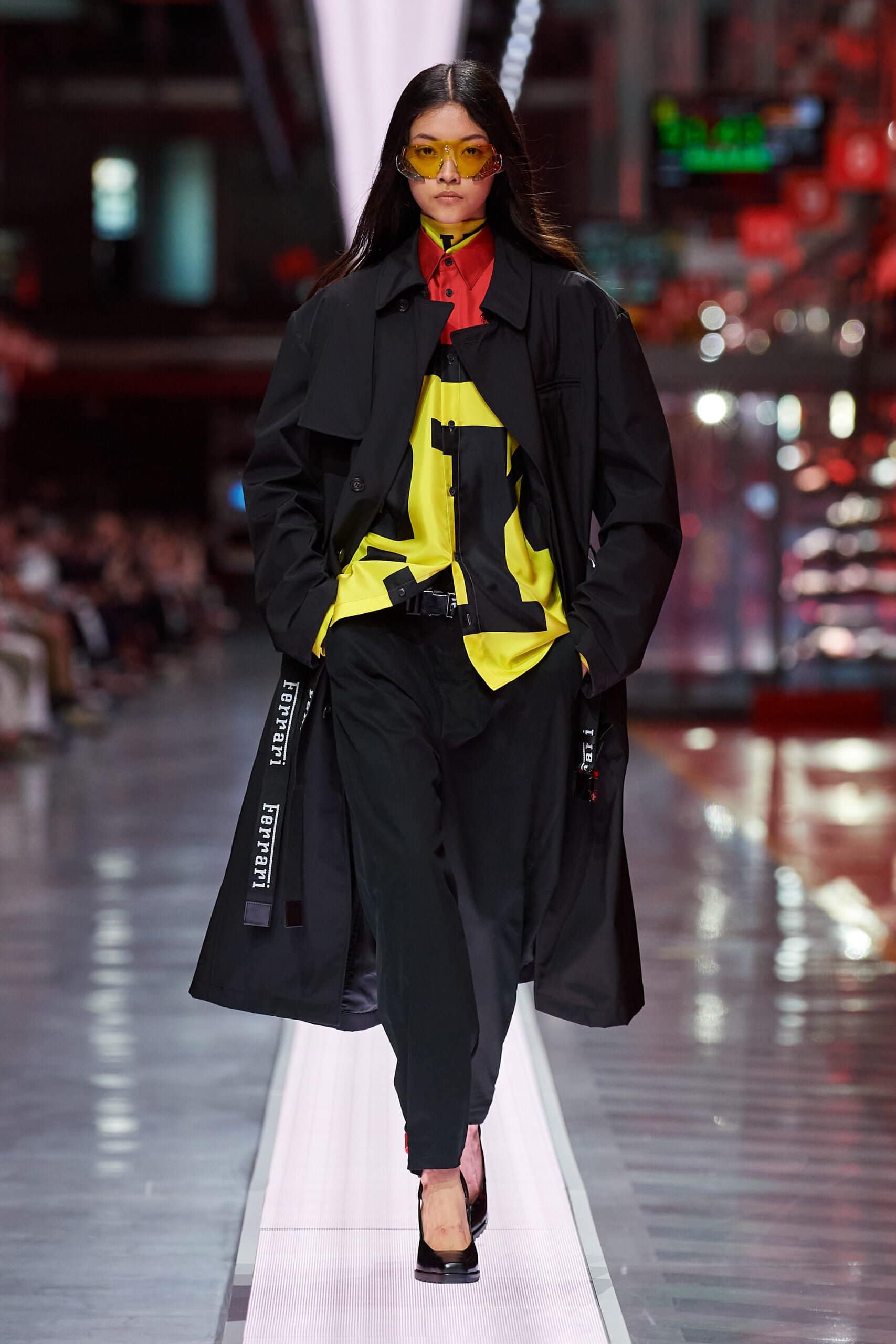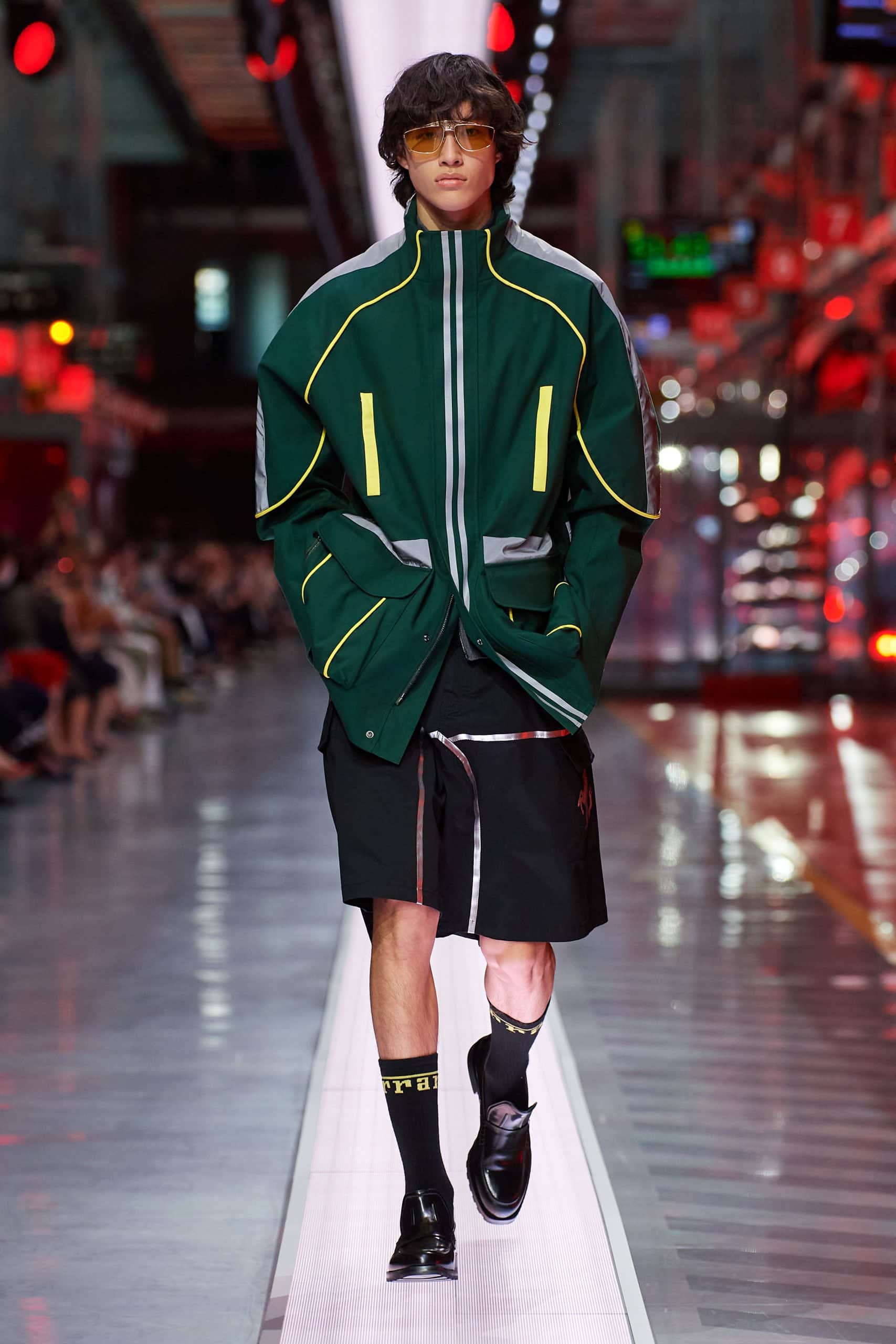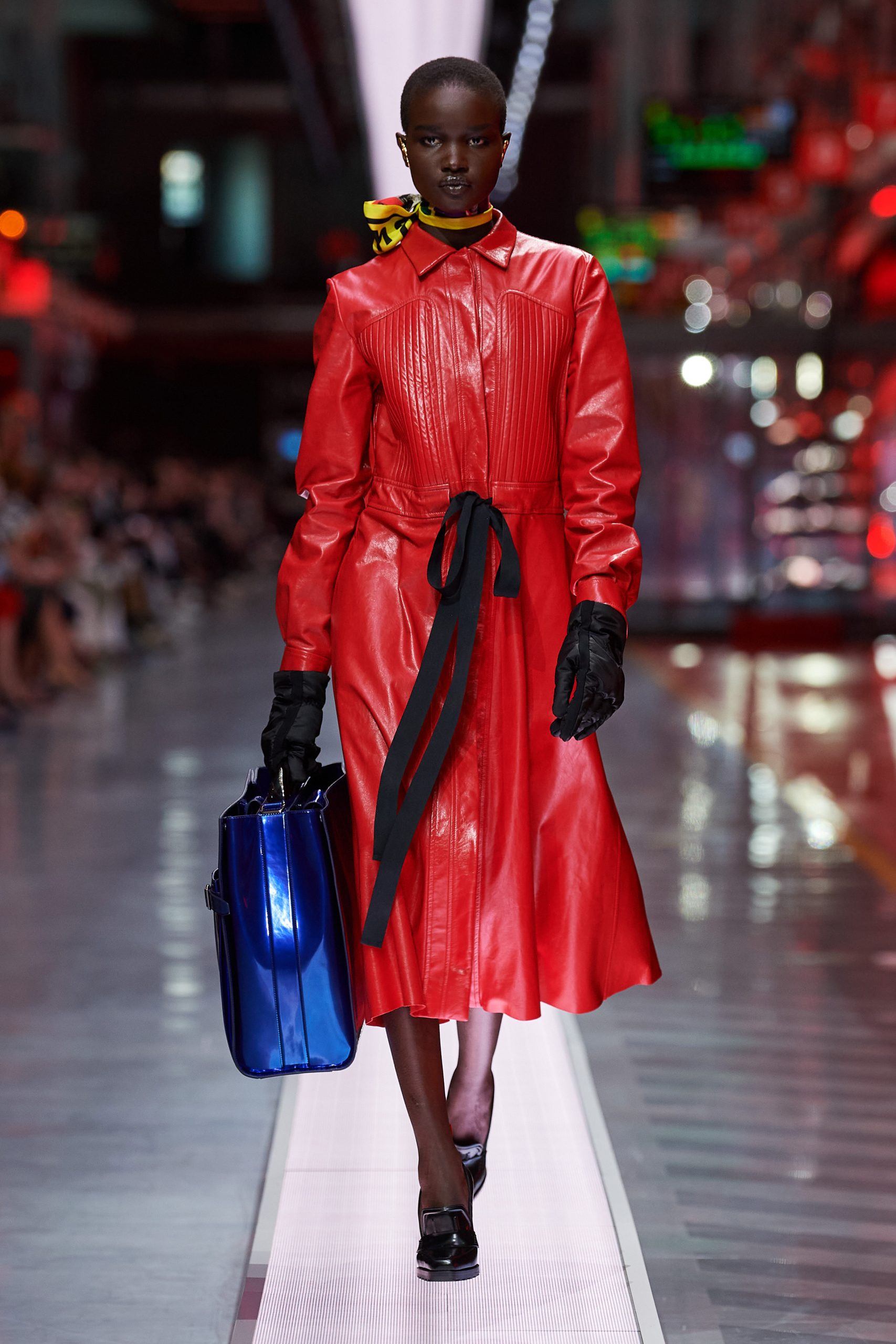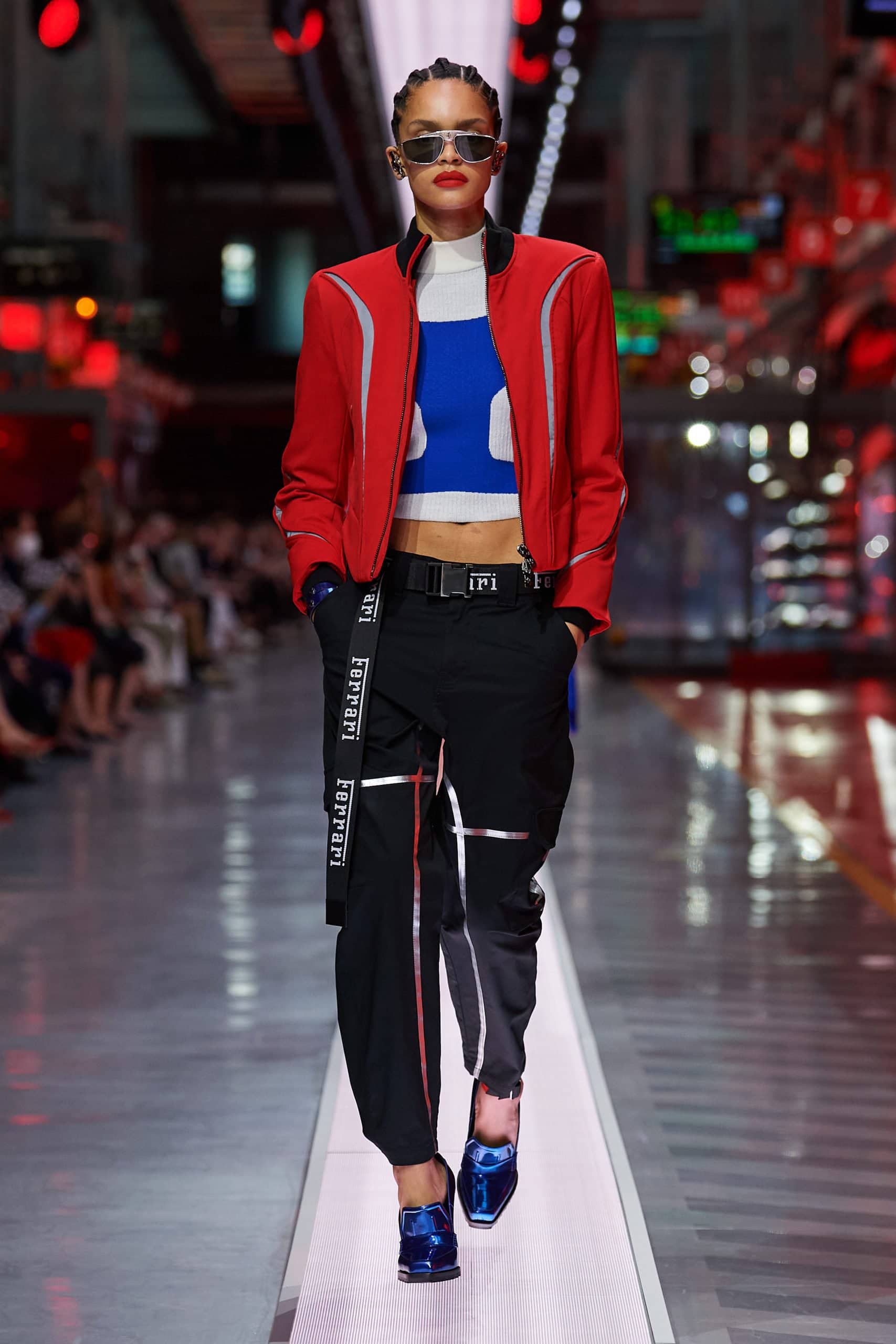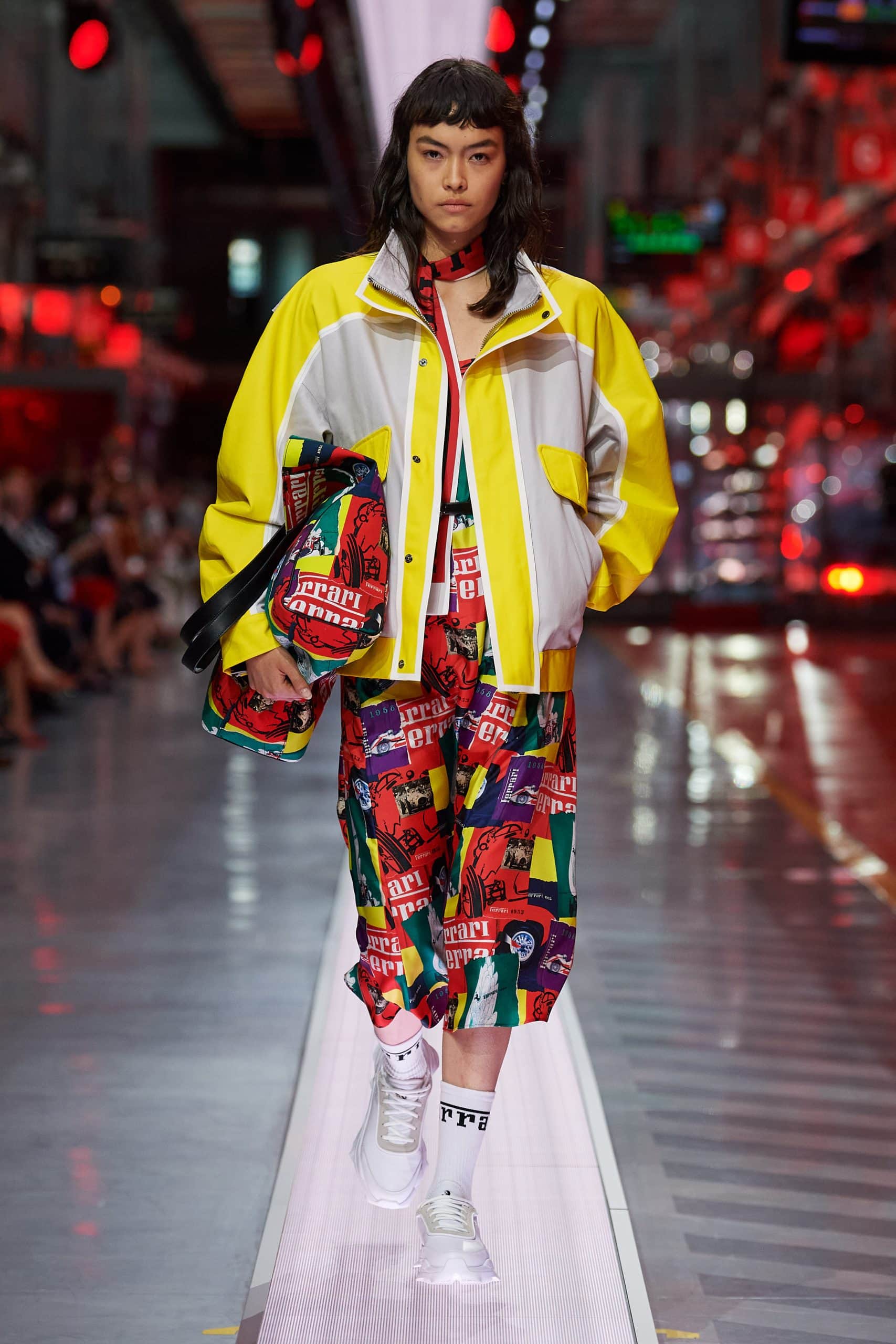Review of Ferrari RTW Spring 2022 Fashion Show
By Mark Wittmer
Ferrari Makes A Bold Entrance into the World of Luxury Fashion with a Debut Ready-To-Wear Collection designed by Creative Director Rocco Iannone
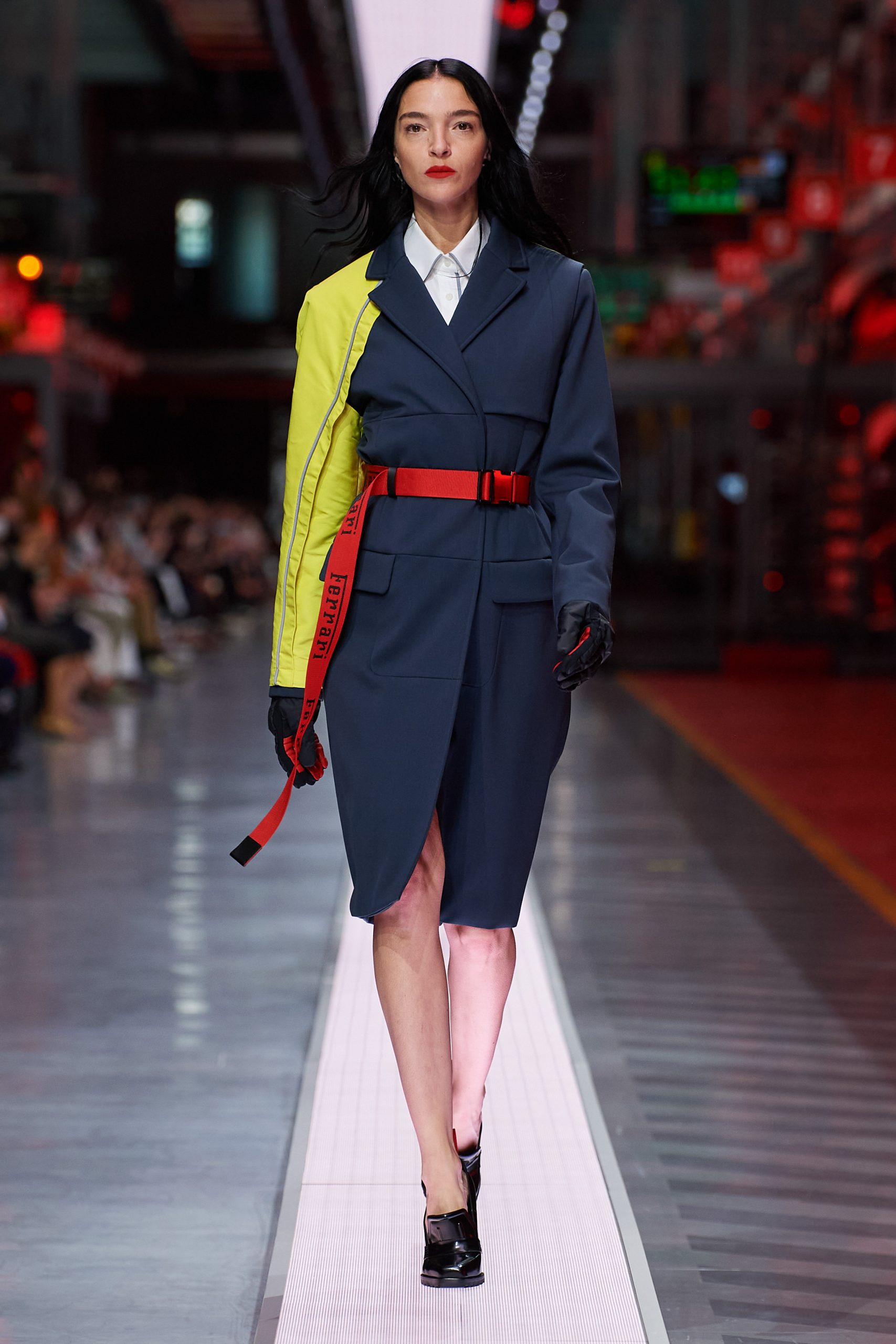
Tapped by Ferrari in late 2019 as its Brand Diversification Creative Director, Rocco Iannone was tasked with expanding the brand’s image, making it not just welcoming to car-crazed dads and wealthy Italian bros, but also to a more inclusive and contemporary audience – women and the younger generation. Considering his experience at Dolce & Gabbana, Giorgio Armani, and most recently Pal Zileri, it makes sense that Iannone’s approach to this mission would primarily take shape in the form of a luxury fashion collection. The fashion industry is one of the most fast-paced and influential spheres of contemporary culture, and provides an exciting opportunity for Ferrari to make their mark through a new kind of speed and power. But how well can the image and ideals of a historic car manufacturer be translated into a 21st-century ready-to-wear collection?
The answer is, quite well, actually.
Impressively transformed into a futuristic runway, the Ferrari assembly plant in Maranello provided the perfect location for the debut. An opening by Maracarla Boscono – clad in an awesomely asymmetrical suit-dress – showed that the house meant business, and 51 other strong, mostly gender-fluid, looks followed.
The collection’s most obvious reference to Ferrari’s iconic brand identity took the form of printed silks and lots of logos. Upon closer inspection, abstract geometric patterns reveal themselves to be densely repeated silhouettes of classic Ferrari models: a smart riff on contemporary fashion’s ubiquitous love of monograms. Other patterns made use of material from Ferrari’s Formula One racing prestige during the 40’s and 50’s, using actual photographs and promotional imagery from this era to create a vintage, pop-art-like print.
While these patterns certainly reveal direct references to Ferrari’s cars themselves, Iannone’s design work embodies the brand’s identity less through obvious mechanical influences, and more through the ideals they represent: power, speed, and a history of excellence. Structured outerwear takes center stage: racing jackets and trench coats with powerful shoulders and bold detailing, sweaters in athletic, primary-colored patterns. Another reference to Ferrari’s origins in the early 40’s, skirts are high-waisted and go past the knee – as do shorts, which get paired with conspicuously branded sport socks.
The accessories were quite strong, and helped to further develop the synthesis of historical (silk neckerchiefs) and cutting-edge (transparent visors and futuristic sunglasses, courtesy of the brand’s new partnership with Ray-Ban). Shoes alternated between classy and sporty – the latter of which were created in partnership with Puma – and both had personalities of quiet, confident sophistication. Extra-long belts – which are expertly deployed to bring in the waist and anchor the silhouette of many a look – immediately remind us of a seatbelt or safety harness, but are also sure to turn the heads of streetwear-minded fans of Off-White or Kim Jones’ work at Dior.
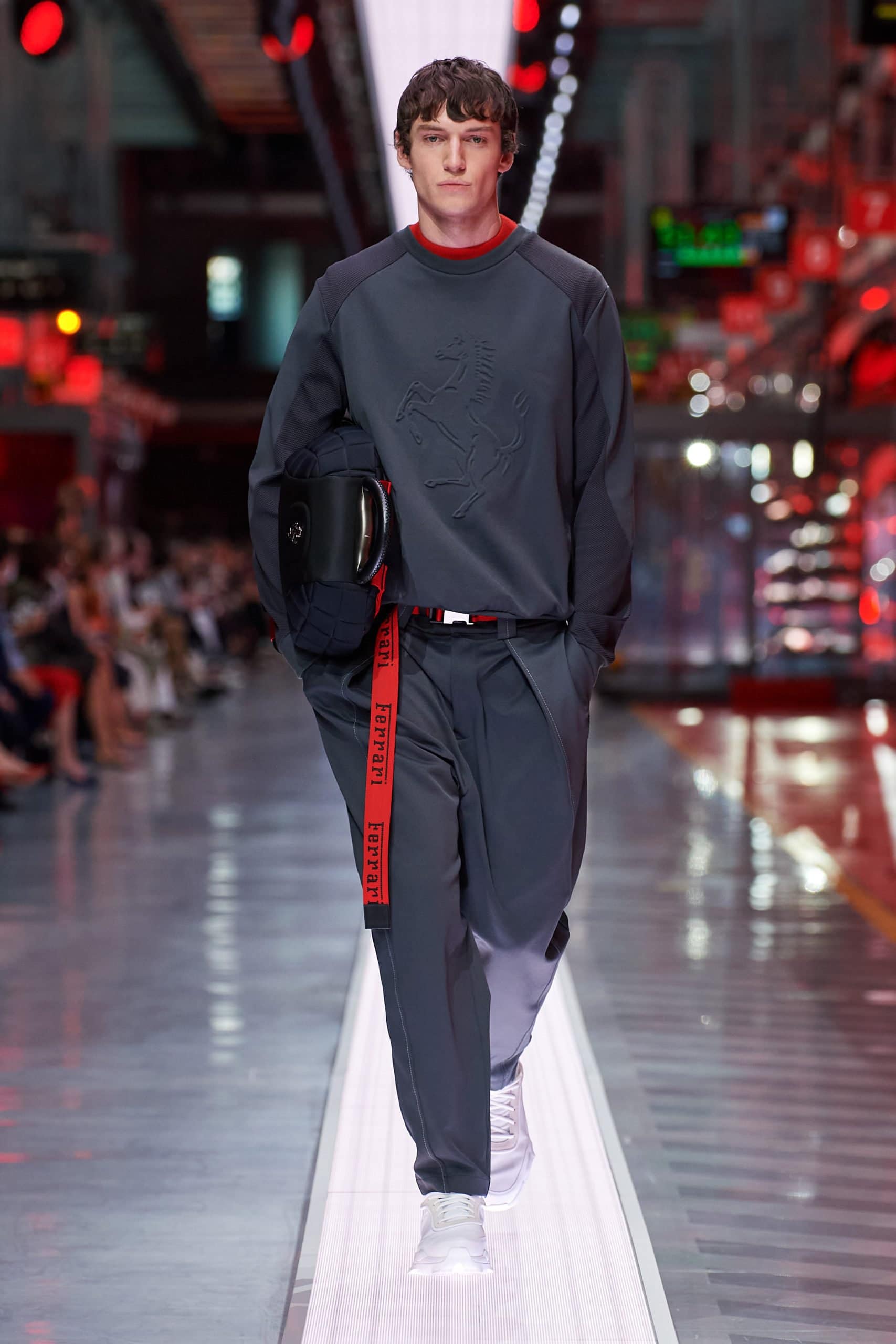
The few sweat-set pieces are the only obvious misstep. They feel like more of a capitulation to market demand or a vestige of the brand’s previous approach to clothing as branded merch, and actually serve to take us out of the otherwise consistent and strong creative vision.
The collection and styling’s thoughtful combinations of technical materials like carbon fiber, vinyl, and polyester with more traditional leather and silks smartly captures Ferrari’s marriage of luxury and performance. Some of the designs feel almost robotic or transhumanist, and we get the sense that to wear them might feel something like piloting a technically sophisticated Formula One vehicle. Though the designs reveal a close consideration of the human body, there is nothing sexualizing about them – the looks feel sexy in the way the roar of an engine does.
The collection is a surprisingly strong fashion debut for Ferrari. Though it’s not what we would have expected from the brand (it’s better), Iannone’s designs do excellent work to transform the Ferrari’s iconic identity into something that feels quite unique in the fashion world.
The mission to bring women to the forefront as Ferrari’s uniquely powerful protagonists felt especially successful. It remains to be seen whether Iannone’s creative powers won’t get burned out on producing collections that necessarily are heavily car-themed, but for now, he’s off to a great start. The debut collection brings a new meaning to the idea of power dressing, and we’re excited to see where Iannone and Ferrari will go next.
